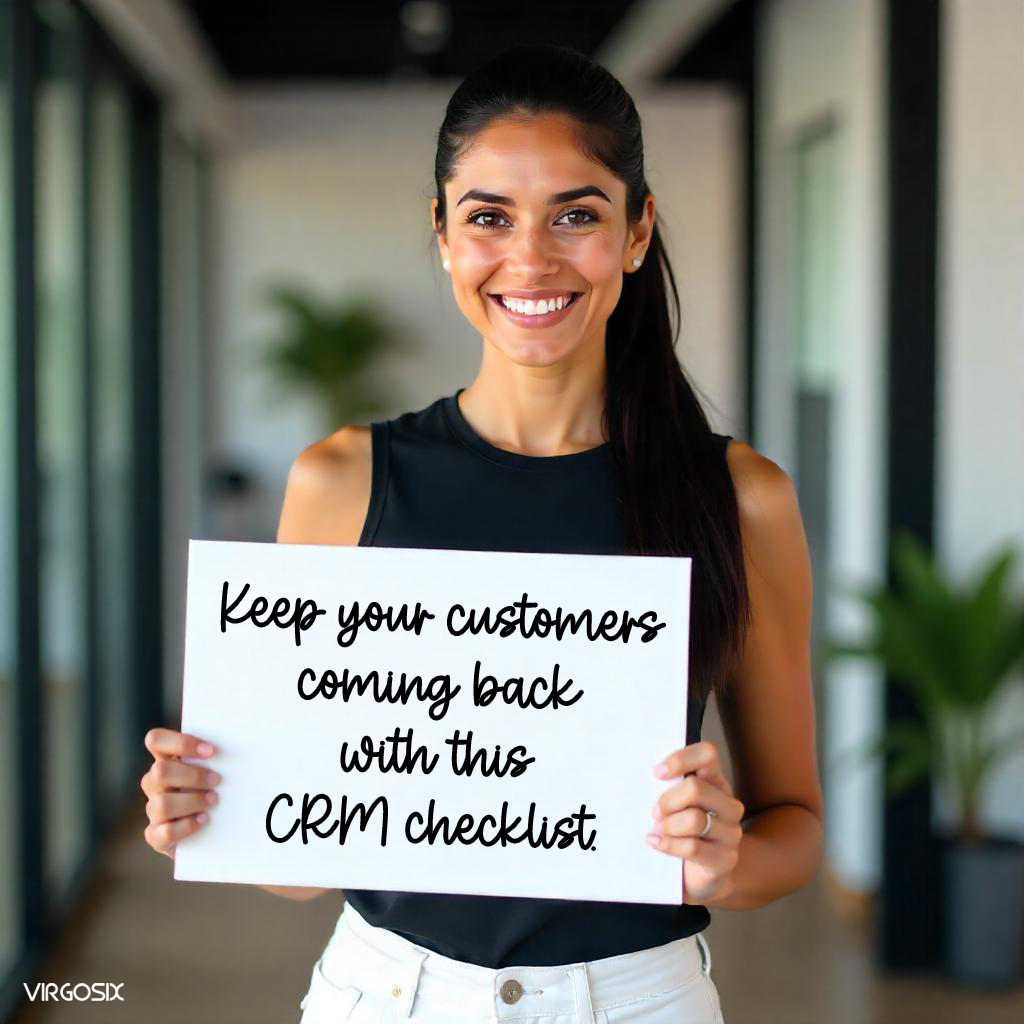Whether you’re a small business owner or a seasoned executive, having a robust CRM strategy is crucial for managing customer relationships effectively.
This ultimate CRM checklist for 2024 will guide you through the essential features, best practices, and tools you need to ensure your CRM system maximizes customer satisfaction and loyalty.

1. Define Your CRM Objectives
Before diving into the specifics of CRM tools and features, it’s vital to outline what you want to achieve with your CRM system. Consider the following questions:
- What are your primary goals? (e.g., lead generation, customer retention, sales tracking)
- Who will use the CRM system? (e.g., sales team, customer service representatives)
- What metrics will you use to measure success?
Defining clear objectives will help you choose a CRM that aligns with your business needs and sets the foundation for a successful implementation.
2. Assess Your Current Processes
A thorough assessment of your current customer relationship management processes is essential. Identify:
- The strengths and weaknesses of your existing system
- Pain points in customer interactions
- Areas that need improvement or automation
Understanding your current processes will enable you to make informed decisions when selecting or customizing a CRM solution.
3. Choose the Right CRM Type
There are various types of CRM systems available, each catering to different business needs. Consider the following options:
- Operational CRM: Focuses on automating and streamlining business processes like sales, marketing, and customer service.
- Analytical CRM: Primarily concerned with data analysis, helping businesses make informed decisions based on customer insights.
- Collaborative CRM: Enhances communication and collaboration among different departments, ensuring a unified approach to customer management.
Selecting the right type will help you leverage your CRM system to its full potential.
4. Look for Key Features
- Reporting and Analytics: Utilize robust reporting tools to generate insights into sales performance, customer behavior, and overall CRM effectiveness. Customizable dashboards can help you visualize data trends and make informed decisions.
- Automation: Implement automation features for repetitive tasks, such as follow-up emails, reminders, and data entry. This allows your team to focus on more strategic initiatives and enhances efficiency.
- Mobile Access: Ensure your CRM is accessible on mobile devices. This flexibility allows your sales and customer service teams to access customer information and update records while on the go.
- Integration Capabilities: Check for compatibility with other software tools you currently use, such as email marketing platforms, accounting software, and social media tools. Seamless integration enhances data flow and minimizes silos.
5. Focus on User Experience
A user-friendly interface is critical for successful CRM adoption. Consider these aspects:
- Intuitive Design: Look for a CRM with a straightforward layout and easy navigation. This will reduce the learning curve for your team and encourage consistent usage.
- Customizable Workflows: Choose a CRM that allows customization of workflows according to your unique business processes. Tailoring workflows helps optimize efficiency and improve the overall user experience.
- Training and Support: Ensure that the CRM provider offers adequate training resources and support. This can include tutorials, webinars, and a responsive customer service team to assist with any issues.
6. Prioritize Data Security
In an era of increasing cyber threats, prioritizing data security is paramount. Here’s what to consider:
- Encryption: Ensure that the CRM system employs encryption to protect sensitive customer data during transmission and storage.
- Access Controls: Implement role-based access controls, allowing you to restrict access to sensitive information based on user roles. This helps protect data from unauthorized access.
- Regular Backups: Choose a CRM provider that offers regular data backups to prevent data loss in case of technical failures or breaches.
7. Implement a Feedback Loop
Establishing a feedback loop is crucial for continuously improving your CRM processes. Encourage your team to share insights and experiences regarding the CRM system. Here’s how to create an effective feedback loop:
- Regular Check-ins: Schedule periodic meetings to discuss CRM usage, challenges, and successes. This promotes open communication and encourages team members to voice their opinions.
- Surveys and Assessments: Conduct surveys to gather feedback on the CRM’s functionality, usability, and effectiveness. Use this feedback to make necessary adjustments.
- Iterative Improvements: Treat your CRM implementation as an ongoing process. Regularly assess and optimize your system based on team and customer feedback to enhance user satisfaction.
8. Measure Success with KPIs
To gauge the effectiveness of your CRM system, establish key performance indicators (KPIs). These metrics should align with your initial objectives and can include:
- Customer Retention Rate: Measure the percentage of customers retained over a specific period, indicating the success of your customer relationship strategies.
- Lead Conversion Rate: Track the percentage of leads converted into customers to assess the effectiveness of your sales processes.
- Customer Satisfaction Score (CSAT): Utilize surveys to gather customer feedback and measure their satisfaction with your services.
Regularly monitoring these KPIs will help you identify trends, spot areas for improvement, and ensure that your CRM system delivers tangible results.
9. Ensure Scalability
As your business grows, your CRM needs will evolve. Choose a CRM solution that can scale alongside your business:
- Flexible Pricing Plans: Look for providers that offer various pricing tiers to accommodate your growing needs without breaking the bank.
- Add-on Features: Ensure that the CRM allows for the addition of features and functionalities as your business expands, making it easy to adapt to changing requirements.
- User Capacity: Check that the CRM can accommodate an increasing number of users without sacrificing performance.
10. Stay Updated with Trends
The CRM landscape is constantly evolving, with new trends emerging each year. Stay informed about the latest developments, including:
- AI and Automation: Leverage AI-powered tools for predictive analytics, customer segmentation, and personalized marketing strategies.
- Omni-channel Communication: Ensure your CRM supports multi-channel interactions, allowing customers to engage with your business through their preferred platforms.
- Remote Collaboration Tools: As remote work becomes more common, look for CRMs that facilitate collaboration among team members, regardless of location.
Staying updated on these trends will help you make informed decisions about enhancements and ensure your CRM remains relevant and effective.
Implementing a CRM system is a significant investment that can transform how you manage customer relationships. By following this comprehensive checklist for 2024, you can ensure that your CRM strategy is well-aligned with your business goals and customer needs.
At the forefront of CRM solutions is VirgoSix CRM, designed specifically for small and medium-sized businesses looking for affordable, customizable, and scalable CRM options. With features that enhance customer engagement and streamline processes, VirgoSix CRM can empower your team to build stronger, lasting relationships with your customers. Embrace the power of effective CRM management in 2024 and elevate your business to new heights!




Permalink